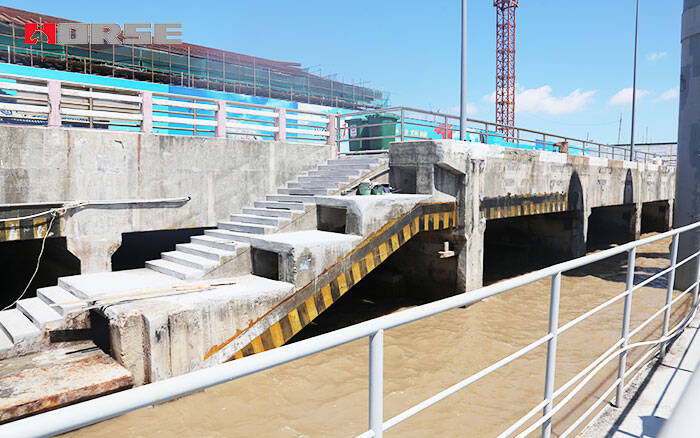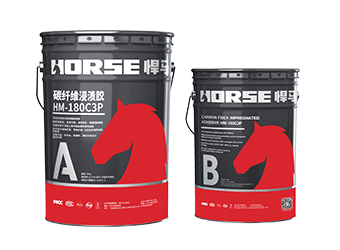Solutions
Horse Construction offers full range of structural strengthening materials with technical supports, documentation supports, products supports, project supports.
When CFRP is used to reinforce beams, if CFRP is not fixed, the glue will break off, and the tensile force of CFRP is only half of its tensile capacity. After anchoring with

1 Overview
At present, many reinforced concrete bridges need reinforcement. The typical reinforcement method is to attach tensile members to the surface of the original components, such as steel plates, reinforcing bars and carbon cloth. In the past decade, as a reinforcement material, "fiber reinforced polymer" (FRP) has been more and more favored by engineers, mainly because of its lightweight, high strength, soft and easy to operate and good corrosion resistance. A bridge strengthened with carbon fiber (CFRP) can significantly improve its bending strength. However, the main reason for the doubt is that the carbon fiber is easy to open.
The research shows that when the stress of CFRP reaches about 50% of its tensile strength, the glue shedding will occur and the reinforcement fails. As a result, the tensile strength of carbon fiber is only half that, and the other half is wasted.
The ability of concrete to resist tension and shear is low, which limits the development of CFRP capability. Generally speaking, the opening of glue starts from the shear cracks of concrete. These cracks occur on the interface between concrete and CFRP, or on the height of tensile steel bar. In order to give full play to the tensile potential of the material and prevent its glue shedding, engineers and technicians have adopted many anchorage methods, among which the effect of increasing the bond length of carbon fiber to resist glue shedding is not obvious.
2 Existing anchorage methods
2.1 U wrap hoop anchorage
When U beams are strengthened with CFRP, anchors are often attached to the ends of carbon cloth. The U hoop itself is also a carbon cloth with a width of 10cm~20cm. The carbon strip is passed around the beam bottom and pasted on the side of the beam, showing a U shape. If conditions permit, carbon cloth can be used to circle the whole beam, and the effect will be better.
At present, a hoop is often added at both ends of the carbon fiber, but the study points out that the anchorage effect is not good. A multi-channel U-shaped hoop should be installed along the full length of the carbon fiber cloth, preferably one hoop per meter. The mid span area is the most easily shedding section, and hoops should be added. The U hoop near the support should be extended as far as possible, so that the shear effect can be achieved.
2.2 carbon plate embedding method
The carbon fiber board instead of carbon cloth is adopted in the method. The section of carbon plate can be determined according to the requirement. The commonly used size is 1cm~2cm, the thickness is 1.4mm~2mm, and the length is unlimited. First, a groove is set in the concrete protective layer. The width of the groove is slightly larger than the width of the plate. The grooves are then cleaned and filled with epoxy resin, then the carbon plate is embedded, the epoxy resin is extruded, and eventually smoothed and trimmed. Because the carbon plate has three contact surfaces with the concrete (only one contact surface is covered with carbon cloth), it can be bonded firmly and the work of treating the concrete surface is reduced.
2.3 anchoring method of riding nail
The anchoring method of "riding nail" is to press a "riding nail" along the length of carbon cloth every 30 cm after sticking carbon cloth or carbon plate. Steel nails are punched into concrete along both sides of the carbon cloth, and the small steel plates are pressed tightly against the carbon cloth to anchor it.
The material used for the "fiber bundle anchor" is the same as that of the U hoop anchoring method. First, a bunch of carbon fiber is cut off according to the required length, and the fiber bundle is immersed in epoxy resin to be used, and the reinforcement section is perforated for the fiber bundle nail insertion. Then paste the carbon plate (cloth) to cover the hole. After the epoxy resin of the fiber bundle is not solidified, it is inserted into the hole through carbon cloth. Finally, the exposed end of the fiber bundle is spread horizontally and pasted on the carbon plate, which is circular or shoulder-shaped (see Figure 1).

In order to achieve ideal anchorage effect, some parameters, such as drilling depth, diameter, flattened shape, etc., need to be studied.
4 Conclusion
When CFRP is used to reinforce beams, if CFRP is not fixed, the glue will break off, and the tensile force of CFRP is only half of its tensile capacity. After anchoring with "fiber bundle anchor", the tensile potential can be brought into full play, the bending capacity of reinforced beams can be effectively improved, and the amount of materials can be saved.
The hole depth of "fiber bundle anchor" should meet the requirement of no less than 5 cm of concrete. This depth can not only ensure good force transmission, but also ensure that the concrete protective layer does not spall. In addition, the fiber bundle anchors adhere to the principle of fine and dense, with uniform transmission force and good anchoring effect. Accurately setting fiber bundle anchor can give full play to its tensile capacity, even if the phenomenon of glue opening occurs, the anchor can still transmit the tensile force of carbon cloth to concrete.
You can find anything here you are in need of, have a trust trying on these products, you will find the big difference after that.

High strength, unidirectional carbon fiber wrap pre-saturated to form a carbon fiber reinforced polymer (CFRP) wrap used to strengthen structural concrete elements.

Good impregnation carbon fiber adhesive for applying carbon fiber reinforced polymer(CFRP) wrap for structural strengthening

High strength carbon fiber reinforced polymer (CFRP) strip / laminate / plate for structural strengthening and concrete repair